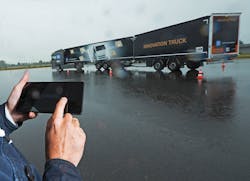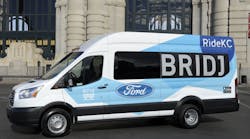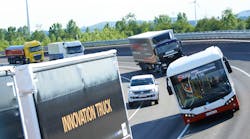In the summer of 2014 I saw a tractor-trailer being operated remotely from an iPad. The joint venture of ZF and Bosch was a prototype at the time and it demonstrated precise operation of a semitrailer and trailer from across the test track.
It was the first time I had seen something like that and it’s hard to believe just a couple of years later, driverless cars and buses are being tested in so many areas.
Around that time I spoke with Susan Shaheen, co-director, Transportation Sustainability Research Center and adjunct professor, UC Berkeley. She was talking about the evolution of transportation network companies, ride-hailing services, carpooling and car-sharing services.
While many people use many of those terms interchangeably, she was explaining the distinctions between them; they are associated with public policy and with specific rules and regulations. Things are moving so rapidly, she said for policy makers it’s probably an exciting time, but also frustrating trying to understand what to do and what the best policy strategy is.
Speaking to that challenge is a report that recently came out from the National League of Cities, “City of the Future: Technology & Mobility.” View at: http://bit.ly.1/kzofku
The report states, “The ultimate goal of cities must be to combine different transit modes into a coherent whole, so that moving from place to place is easy, equitable and enjoyable.”
One of the conclusions, however, was that many long-term transportation plans for the cities focus almost exclusively on automobile congestion and how to better accommodate automobile growth. Despite the fact, it goes on, that experts and trends point to a future that will be increasingly multi-modal.
Only 6 percent of the plans consider the effect of driverless technology and more surprising, only 3 percent take into account private transportation network companies, such as Uber or Lyft.
It’s exciting to see the transit agencies embracing the transformation, becoming transportation managers of their communities through innovative programs and partnerships. The latest we heard about as we were going to press, was Ride KC: Bridj, a pilot program with Kansas City Area Transportation Authority (KCATA) and Bridj. Representing the evolution of transit agencies, KCATA President and CEO Robbie Makinen said, “KCATA is a place where bus, bike, streetcar and rapid transit come together to create a seamless and borderless transportation network that’s easy and friendly to use. Bridj will be a valuable addition to Kansas City’s mix of transportation options.”
Whether these technological innovations compete or enhance depends on how we embrace or exclude them.





